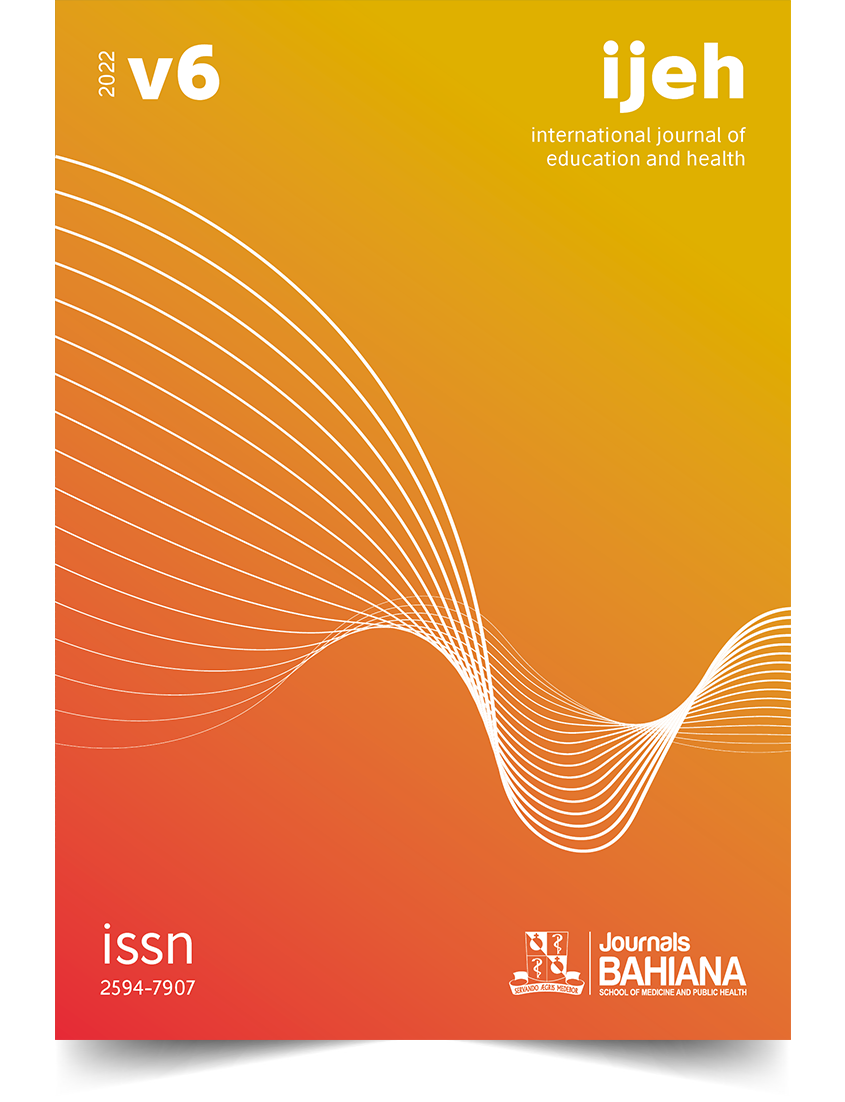Perception of undergraduate medical students regarding the use of Information and Communication Technologies
DOI:
https://doi.org/10.17267/2594-7907ijeh.2022.e4404Keywords:
Education, High Education, Perception, Degree, Technologies of Information and Communication, Technology in EducationAbstract
INTRODUCTION: Information and communication technologies enhance collaboration between students and health personnel worldwide to generate globalized health research and to improve the implementation of public health measures. OBJECTIVE: To evaluate the perception of information and communication technologies of medical students from a private university in the city of Medellín-Colombia. METHODOLOGY: Descriptive observational study that included pre-med and first-semester medical students who gave their consent. Variables such as sociodemographic, academic, information, and communication technologies skills and perception were included in the study. The information was collected through a survey made in Microsoft Forms®; absolute and relative frequencies were used for the analysis. RESULTS: 69 students participated in the study, of which 69.5% (48) were women; the average age was 17 years. Regarding access to electronic devices, it was found that 98.5% (68) had a cell phone, while 94.2% (65) had their own computer, and 100% (69) had internet access at home. CONCLUSION: Students perceive that due to the pandemic, the use of the Internet for academic activities increased, which impacted the time that was dedicated to digital entertainment activities; furthermore, they perceive that the trend in the use of information and communication technologies leads to a dehumanization of society.
Downloads
References
(1) Humanante-Ramos P, Solís-Mazón ME, Fernández-Acevedo J, Silva-Castillo J. The ICT competences of students entering university: An experience in the Faculty of Health Sciences of a Latin American university. Educ Med. 2019;20(3):134-39. https://doi.org/10.1016/j.edumed.2018.02.002
(2) Pardo JC, Rosario RB, Abdellah LD, Justel FB, Tomás JFA. Definición y evolución de la eSalud. Formas para evaluar la calidad de los proyectos de eSalud. FMC Form. Medica Contin. en Atencion Primaria. 2015;22(9):475-481. https://doi.org/10.1016/j.fmc.2015.09.001
(3) Wang J, Abdullah AS, Ma Z, Fu H, Huang K, Yu H, et al. Building capacity for information and communication technology use in global health research and training in China: a qualitative study among Chinese health sciences faculty members. Health Res. Policy Syst. 2017;15(59). https://doi.org/10.1186/s12961-017-0222-8
(4) Gómez-Aguilar M, Roses-Campos S, Farias-Batlle P. The academic use of social networks among university students. Comunicar. 2012;19(38):131-38. https://doi.org/10.3916/C38-2012-03-04
(5) Cabaña EE, Wasmuth YG. Factores que inciden en la educación virtual en tiempos de pandemia (COVID-19) de los estudiantes universitarios de una universidad privada [Internet]. Revista Iberoamericana de Docentes. 2020. Available from: http://formacionib.org/faactoresqueinciden.pdf
(6) Larrauri RC. Las nuevas competencias TIC en el personal de los servicios de salud. Revista de Comunicación y Salud. 2011;1(2):47-60. https://doi.org/10.35669/revistadecomunicacionysalud.2011.1(2).47-60
(7) Instituto Internacional de la UNESCO para la Educación Superior en América Latina y el Caribe. El Coronavirus COVID-19 y la educación superior: impacto y recomendaciones [Internet]. UNESCO-IESALC; 2020. Available from: https://www.iesalc.unesco.org/2020/04/02/el-coronavirus-covid-19-y-la-educacion-superior-impacto-y-recomendaciones/
(8) Hueso LC. Digital education taken seriously and the right to education in times of the coronavirus. Revista de Educación y Derecho. 2020;21. https://doi.org/10.1344/REYD2020.21.31283
(9) Anancolla AMC. Percepción sobre la educación virtual, en adolescentes de la parroquia Salasaca, durante la pandemia del COVID-19. Ocronos. 2020;3(8). Available from: https://revistamedica.com/educacion-virtual-adolescentes-pandemia-covid-19/
(10) Suárez-Escudero JC, Posada-Jurado MC, Bedoya-Muñoz LJ, Urbina-Sánchez AJ, Ferreira-Morales JL, Bohórquez-Gutiérrez CA. Teaching and learning anatomy pedagogical methods, history, the present and tendencies. Acta Médica Colombiana. 2020;45(4). https://doi.org/10.36104/amc.2020.1898
(11) Martinez IDL, Carmona BSA. Virtual simulators as a fundamental tool in clinical medical education in times of COVID-19. Educación Médica Superior [Internet]. 2021;35(1):e2819. Available from: http://ems.sld.cu/index.php/ems/article/view/2819
(12) Luján-Piedrahíta M. Virtuality in the internal medicine theoretical course in students of V, VI and VII semester as a result of the COVID-19 pandemic during the first semester of 2020, School of Medicine, School of Health Science, Universidad Pontificia Bolivariana, Medellín, Colombia: Disclosure of an academic exercise. Med UPB. 2020;39(2):66-72. https://doi.org/10.18566/medupb.v39n2.a11
(13) Bossolasco ML, Chiecher AC, Santos DA. Perfiles de acceso y apropiación de TIC en ingresantes universitarios. Estudio comparativo en dos universidades públicas argentinas. Pixel-Bit. Revista de Medios y Educación. 2020;57:151-72. https://doi.org/10.12795/pixelbit.2020.i57.06
(14) Luna DAN, Ávila EO, García JJV, Nistal MTF, Argüelles GPR. Actitudes y hábitos asociados al uso de las TICs en alumnos de psicología. Psicol. Am. Lat [Internet]. 2013;25:91-144. Available from: http://pepsic.bvsalud.org/scielo.php?script=sci_arttext&pid=S1870-350X2013000200007
(15) Moreno-Correa SM. Educational innovation in the time of the Coronavirus. Salutem Scientia Spiritus [Internet]. 2020;6(1):14-26. Available from: https://pesquisa.bvsalud.org/portal/resource/pt/biblio-1087909
(16) Cabrera ML, Olivares SLO, Leal JAE, García JEV. Proposal for academic continuity and distance medical training in the face of the COVID-19 pandemic. Educación Médica Superior [Internet]. 2021;35:e2603. Available from: http://ems.sld.cu/index.php/ems/article/view/2603/1174
(17) Santos LM, Grisales D, Suero-Rico J. Perception and Technological Accessibility of University Students in Southwest of the Dominican Republic during Covid-19. Revista Internacional de Educación para la Justicia Social. 2021;10(1):145-65. https://doi.org/10.15366/riejs2021.10.1.009
Downloads
Published
Issue
Section
License
Copyright (c) 2022 Maria Paula Rubiano Varela, Lina María Martínez-Sánchez, Sara Perez Arias, Ivan Felipe Luna, Gustavo Adolfo Giraldo, Jorge Ivan Chica

This work is licensed under a Creative Commons Attribution 4.0 International License.
This work is licensed under a Creative Commons Attribution 4.0 International License.



